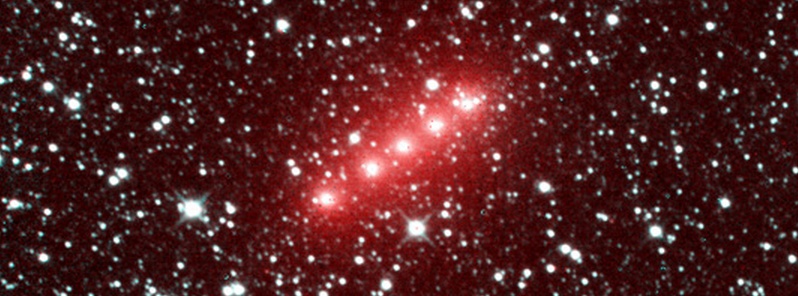A yearlong look at asteroids and comets by NEOWISE

NASA's Near-Earth Object Wide-field Survey Explorer or NEOWISE spacecraft, a space telescope that scans the skies for asteroids and comets, discovered and characterized 40 near-Earth objects (NEOs) in the first year after the mission was re-started in December 2013, JPL reports.
Eight of the discoveries have been classified as potentially hazardous asteroids (PHAs), based on their size and how close their orbits could come to Earth's orbit.
The mission has further observed and characterized 245 previously known near-Earth objects. From December 2013 to December 2014, NEOWISE discovered three new comets and observed 32 others. One of the others has turned into the brightest comet in Earth's night sky in early 2015, comet C/2014 Q2 (Lovejoy).
This new movie depicts asteroids and comets observed in the past year by NEOWISE. Each dot represents an asteroid or comet that the mission observed. Green circles represent near-Earth objects (asteroids and comets that come within 1.3 astronomical units of the sun; one astronomical unit is Earth's distance from the sun). Yellow squares represent comets. Gray dots represent all other asteroids, which are mostly in the main asteroid belt between Mars and Jupiter. The orbits of Mercury, Venus, Earth, and Mars are shown.

About NEOWISE
NEOWISE always looks in the dawn and twilight skies – the direction perpendicular to a line between Earth and the sun. This unique vantage point makes it easy for NEOWISE to spot NEOs that get particularly close to Earth.
Originally called the Wide-field Infrared Survey Explorer (WISE), the spacecraft was placed in hibernation in 2011 after its primary mission was completed. In September 2013, it was reactivated, renamed NEOWISE and assigned a new mission to assist NASA's efforts to identify the population of potentially hazardous near-Earth objects. NEOWISE is also characterizing previously known asteroids and comets to provide information about their sizes and compositions.
NEOWISE sees infrared light, which allows it to pick up the heat signature of asteroids and obtain better estimates of their true sizes. As a result, NEOWISE can see dark asteroids that are harder for visible-light surveys to find. Nearly all of the NEOWISE discoveries have been large (hundreds of yards, or meters, wide) and very dark, similar to printer toner. When NEOWISE's infrared data on an object is combined with that of a visible-light optical telescope, it helps scientists understand the object's composition.
- Mission homepage: http://www.nasa.gov/neowise
Source: NASA/JPL
Featured image: Image of comet Lovejoy which combines a series of observations made in November 2013, when comet C/2014 Q2 (Lovejoy) was 1.7 astronomical units from the sun. Credit: NASA/JPL-Caltech

Commenting rules and guidelines
We value the thoughts and opinions of our readers and welcome healthy discussions on our website. In order to maintain a respectful and positive community, we ask that all commenters follow these rules.